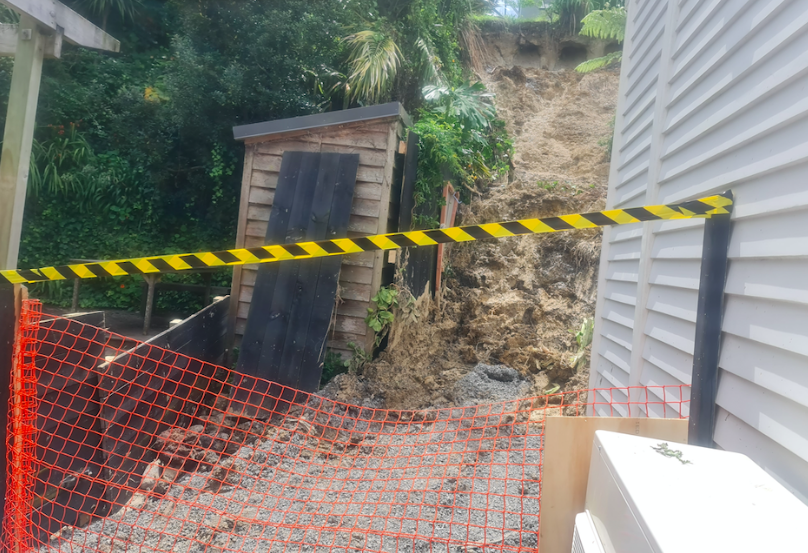Local building inspectors gain valuable experience in Auckland
Maddy Harker
14 February 2023, 4:04 PM
 One of the sites QLDC building officers visited during a trip to Auckland following the January floods.
One of the sites QLDC building officers visited during a trip to Auckland following the January floods.A group of Queenstown Lakes District Council (QLDC) building control officers who flew to Auckland earlier this month to assist with the response to the late-January floods returned better prepared for a possible natural disaster in Queenstown Lakes.
Carmeny Field, Peter Meikle, Garth Swan, and Rhys Cunningham arrived in Auckland on February 2, about a week after the floods, and completed up to 20 rapid building assessments each day.
“It was a way to get some real world experience in relation to the rapid building assessment training we had had,” Carmeny told the Wānaka App.
“And because we could help - it was a way to actually utilise those skills and help.”

QLDC building control officer Carmeny Field said Aucklanders affected by the floods were “really resilient”.
Carmey said the worst-affected areas had already been assessed by the time the QLDC staff members arrived so the majority of assessments were responses to call-outs from members of the public whose houses might not have been amongst the initial response’s top priority.
“It was strange because the city was quite quiet and things were normal in some places, and people were going about their normal business, and then there were houses that had been absolutely inundated with water,” she said.
Even though many people’s homes had been flooded, the people affected were “really resilient,” she said.
“They’d tell us ‘we’re still okay’.
“When there were people at the properties we assessed, they were really grateful to see us, and grateful for how quick we had turned up.”
Rapid building assessments are designed to ensure the safety and well-being of building occupants after major events, and they provide a way to prioritise the structural condition of buildings and identify the worst immediate hazards.
Houses are assessed between red (‘entry prohibited’), yellow (‘restricted access’) and white (‘can be used’).

The experience provided “real world experience” for applying rapid building assessment training, Carmen said.
Carmeny said part of the work included revisiting homes that had already been assessed and reassessing them: “A lot of these houses had had a lot of water and we could reassess them to a yellow placard. In a lot of instances that we saw the houses looked like they would be repairable.”
The QLDC team arrived on a Thursday and worked through the weekend, returning home the following Monday.
QLDC building services manager Chris English thanked Carmeny, Peter, Garth and Rhys for their generosity and willingness to assist a community in need.
“There’s no better practice than applying skills in real-life events, and we never know when that experience might be required closer to home,” Chris said.
The natural disaster most likely to occur in Queenstown Lakes is a major earthquake and Carmeny said the process for assessing flood damaged homes was “very similar” to an earthquake-damaged home.
“It definitely helped to give us knowledge of the process,” Carmeny said. “I’d definitely put my hand up again.”
Auckland is facing another bout of severe weather with Cyclone Gabrielle in full force in the Upper North Island.
There are widespread power outages, flooding, slips, and damage to properties and a national state of emergency was declared yesterday (Tuesday February 14).
PHOTOS: QLDC






